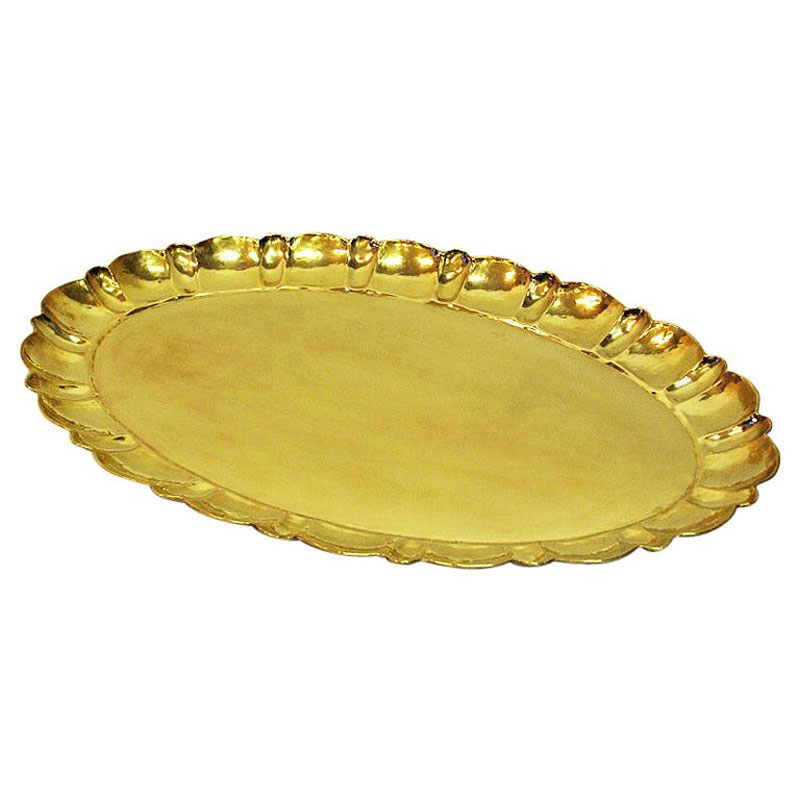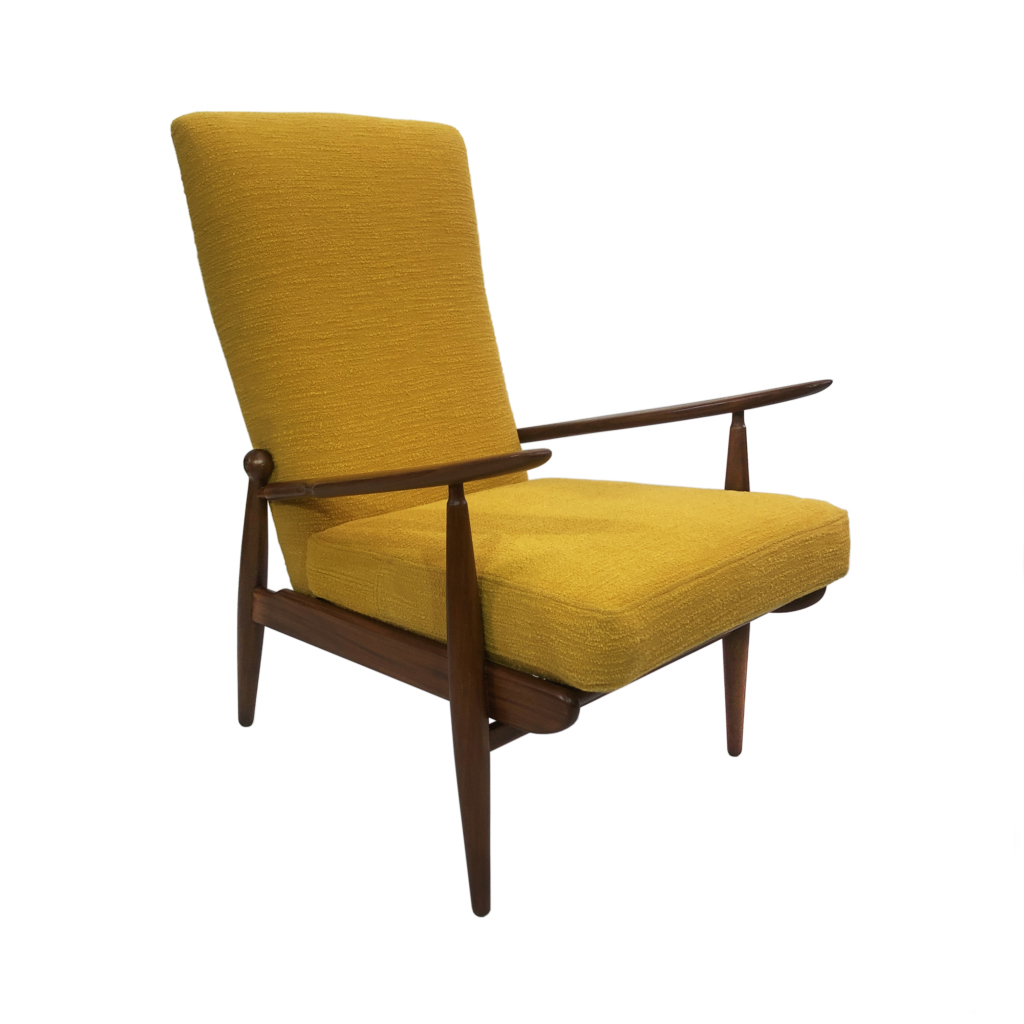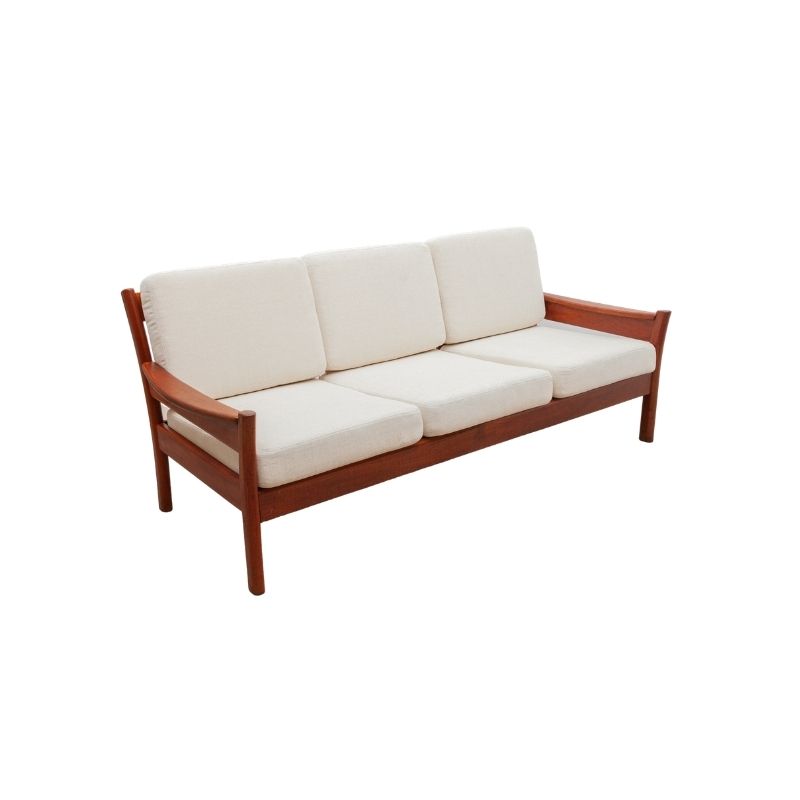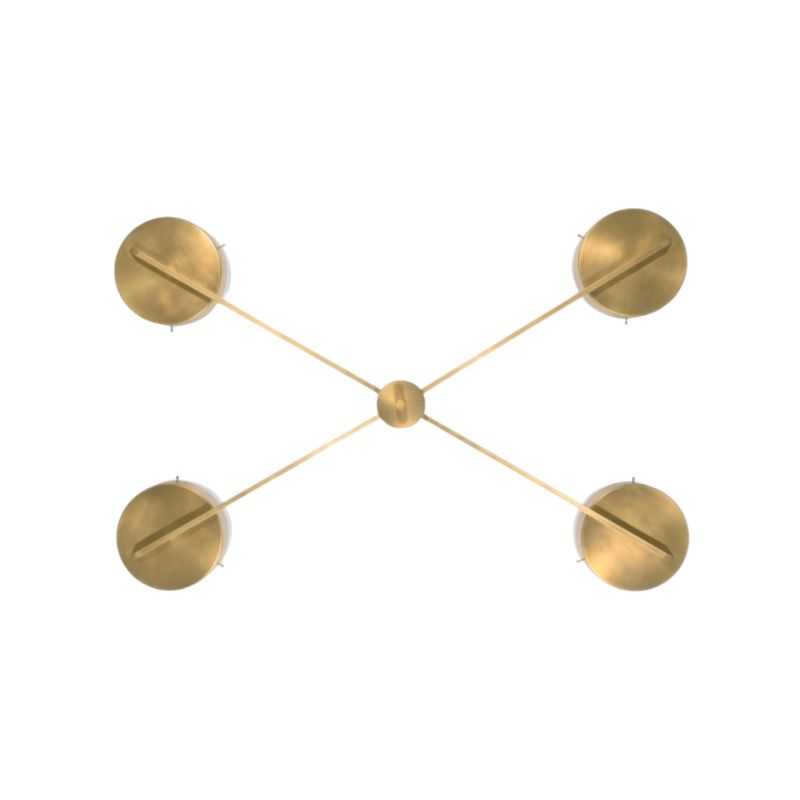I seriously can't stand the...
I seriously can't stand the version with the 4 legs that Fritz Hansen put into production soon after Jacobsen passed away. The Ant had a tendency to tilt because of the lacking 4th leg.
Jacobsen org. created it with 3 legs and that's how I like it. The early chairs in palisander and teak are absolutely beautiful. I don't think the Ant chair looks good in different bright colours (which fx. the 3107 chair does) - I prefer my Ant with some nice, smooth veneer.
Some say that Verner Panton,...
Some say that Verner Panton, who worked for Jacobsen at the time, actually created it's unique shape of the backrest though when asked about this, Panton never answered it directly. But then again, the seat partially looks the way it does because otherwise it wouldn't be possible to bend it into the double-curved shape that made it revolutionary at the time.
Was it Hans J. Wegner or Gunnar Aagaard Andersen who gave the Ant chair its name? ... I believe it was Gunnar.
IMAGE
Just a little peave of mine- it's easy enough to link to an image...
(Nice chair, if you're into that sort of thing.)
http://www.arne-jacobsen.com/neobuilder.20020205123321870000001894470625...
"2 layers
of linen" in the plywood seat sandwich. . .for what ?
Koen ?
http://www.arne-jacobsen.com/neobuilder.php?id=2002020512332187000000189...
It's an interesting question...
The only reason I know of was mentioned to me during a tour of the production plant of De Coene in Kortrijk, Belgium. At the time a powerhouse of modern design...and licence holders of Knoll International for a substantial part of Europe. They weer large producers of laminated wood, from large scale construction elements for buildings to smaal scale household products. The tour was part of my first day at work and one of the workers in the plant mentioned to me that they used to put two or three layers of linen in between the wood...but now (1966) this was not necessary anymore because the new glues weer "gap-filling". This reminded me of the fact that my own father (a cabinet maker) always mentioned the importance of very thight joints and insisted that we should make them fit very nicely...also because "..the glue itself has no strength.." In other words a thicker layer of glue made the piece weaker because not the wood but the glue would crack undert a load. "Gap-filling" glues, like many hot melts are gap-filling because of their own strength. Laminated, bended wood creates easily gaps because it requires completely paralell mould surfaces. My understanding was that the linen was a way of re-enforcing the "thicker" parts of the glue. So...I wonder if it is still done at Fritz Hansen.
I am anxcious to hear from people who know more about this than I do
Thanks,
Koen. That's a start. I've done a fair amount of curved lamination (though no compound curves) and this is new to me. Perhaps the fabric was intended to absorb and distribute the minor random diiscrepencies in thickness -- placed near the center of the sandwich they would be least subjected to shear, which they would presumably be less able to withstand ? The glue (what resins have you seen in use in these production settings ?) would saturate the linen, of course. And why linen ? It seems like more of a reinforcement material -- else why would its use be mentioned ? Odd. . .
I am using polyurethane glue more and more, for its expansive curing as well as its wide range of material applications. Miters in solid wood are a current favorite. . .
If you need any help, please contact us at – info@designaddict.com









